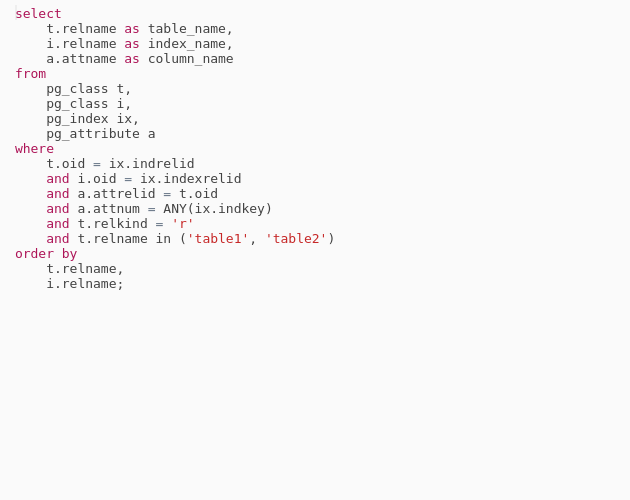
Details about the fill factor attribute can be seen on PostgreSQL documentation. This means that if your table is intended to have lots of updates you should use a small fill factor, on the other hand, static tables or least updated ones can use a greater fill factor to save disk space. This attribute is related to how much (in a percentage from 10 to 100) the table/constraint pages are packed (in terms of physical space usage). The image below shows all the fields related to this kind of constraint. Technically speaking, a primary key is a combination of a unique and a not-null constraint. Primary keys specify that one or more columns of a table can store only unique (non-duplicated) and non-null values. In pgModeler, once created a constraint, its type (primary key, foreign key, unique, etc) can't be changed due to its strong linking to the relationship objects and the columns/constraints propagation mechanism (explained further in this documentation). The constraint objects are shown in the table's extended attributes area (the bottom portion) in the same place where other objects like triggers, rules, indexes, and policies are listed. The image below shows an example of these constraint codes. The two-letter codes for constraints are: pk (primary key), fk (foreign key), uq (unique), ck (check), ex (exclude) and nn (not-null).
#Postgresql create table primary index code
Graphically, in pgModeler database models, for each constraint in which a column is a participant a two-letter code will be appended to a string surrounded by « », this way the user is able to quickly identify which constraints the column is in. These constraints will be detailed in the next sub-sections. The PostgreSQL implements six different types of constraints, being them: primary keys, foreign keys, unique keys, check, exclude and not-null. It is used to generate a temporary table, and it will delete after the existing operation or at the end of a session.Constraints are objects that provide data integrity in tables. In this parameter, a table can have structure from the defined composite type. This parameter does not enter data into the write-ahead log (WAL) because of the deletion of this further IO operation, write performance is improved. If a table already occurs with a similar name, a warning will be displayed in place of an error. In the below table, we can define some of the essential lists of parameters that we use while creating a table is in-depth.


In our case, we will create a table called Employee.

Firstly, we will open the latest version pgAdmin in our local system, and we will go to the object tree and select the database, in which we want to create a table.We are going to follow the below process to create a table in pgAdmin: PostgreSQL Create Table using SQL Shell PostgreSQL Create Table using pgAdmin.In PostgreSQL, we can create a table in two ways: Note: A table cannot have a similar name as any existing table in the same schema. Column N: These are used to define the name of the columns.ĭata_type: It is used to define the data types (integer, text, character, Real, and so on) of the column. Table_name: It is used to define the name of the table.Ĭolumn1, Column2. In the above syntax, the CREATE TABLE is a keyword, which used the database system for creating a new table.


 0 kommentar(er)
0 kommentar(er)
